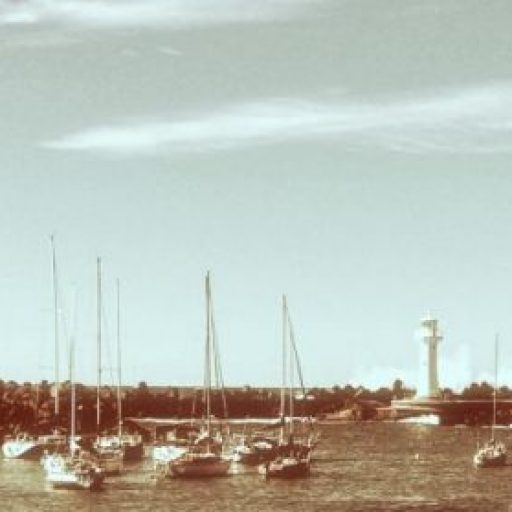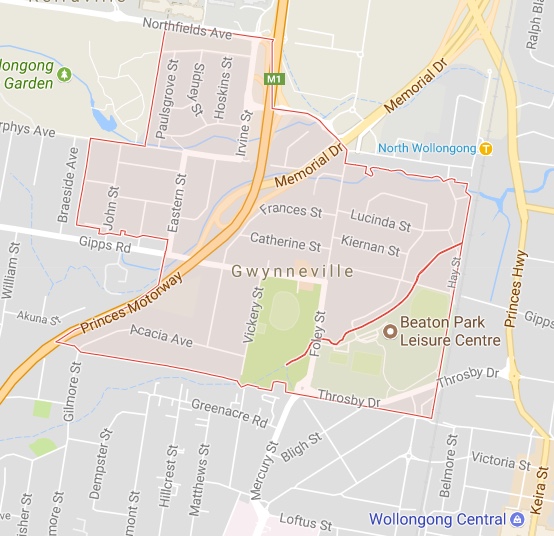The area known as Gwynneville was part of a Land Grant to James S Spearing called “Paulsgrove” or “Mount Keira Estate” in 1828. The next few years saw it change hands many times. In 1835 it was conveyed to Lt Colonel John Leahy, who changed the name to Mount Keera. Following his death in 1839, the property was inherited by his brother, Daniel, and then sold to Robert and Charles Campbell. In accordance with the trusts of sale, the land was subdivided into a large number of housing blocks and farms.
Eventually the Gwynne family purchased 100 acres of land within the Mt Keera subdivision. Later it was sold in two lots: the first to Mr John Gwynne who purchased 86 allotments at auction on 3rd March 1886; and the second lot, bordered by Northfields Avenue, Gipps Street and Murphy’s Lane, was purchased at the end of the same year by his brother William.
In the early years, Fairy Creek ran through the gully, the F6 runs through part of it today. Cows grazed on the slopes down to the creek, which provided a good source of water for the cattle.
During World War 2, there were many shops operating in Gipps Road and Foley’s Road. Mr & Mrs Fitzgibbon ran a busy grocery store, affectionately known as “Fitzy’s”, where almost anything needed by the many local families could be found. The shop was later known as Martin’s Corner, most likely after a popular Radio Serial of that time. Around the corner in Gipps Road was Sid Parrish’s butcher shop and the School of Arts, a popular venue for wedding receptions, 21st birthday parties, meetings and many other gatherings. There was also another General Store which sold household goods as well as groceries.
An Interdenominational Sunday School was set up in another Hall in Berkeley Road run by a Mr & Mrs Jordan. Many of the local children attended this at 3pm on Sunday afternoons.
In the pre-WW2 days, and throughout the war, Keiraville Public School catered for the children of the area until Gwynneville School was begun in 1952.
St Bridget’s Roman Catholic Church was built and opened in 1951, followed by the school in 1953.

Wiseman’s Park was used for sporting and recreational activities by the growing population from the 1920’s onwards. Wiseman’s Park Bowling Club was later established on the corner of Gipps Road and Foley’s Road.
Denison’s Bakehouse was set up in 1939 in Foley’s Road and delivered fresh bread daily in a horse drawn cart to many areas, from Gwynneville to Coniston and probably to the north also. Mr Denison’s bread was renowned throughout the district and won many awards.
Wollongong Teachers College was officially opened in 1965, although the first classes conducted by the college were held in 1962. It became known as the Wollongong Institute of Education and continued to train teachers until it amalgamated with The University of Wollongong in 1982. A new Faculty of Education was formed in 1984, merging the School of Education with the University’s long established Department of Education.
Greenacres school also began its long history in Porter Street, providing much needed education and care for the disabled.
Dr Keith Khan opened his surgery in the early 1950’s and continued to practice medicine for many decades.
With easy access to the freeway north to Sydney and south to Albion Park and beyond, Gwynneville continues today as a thriving community for young families to settle into.

